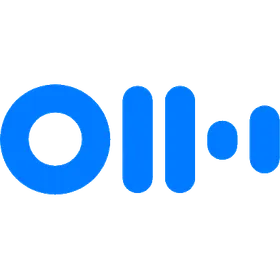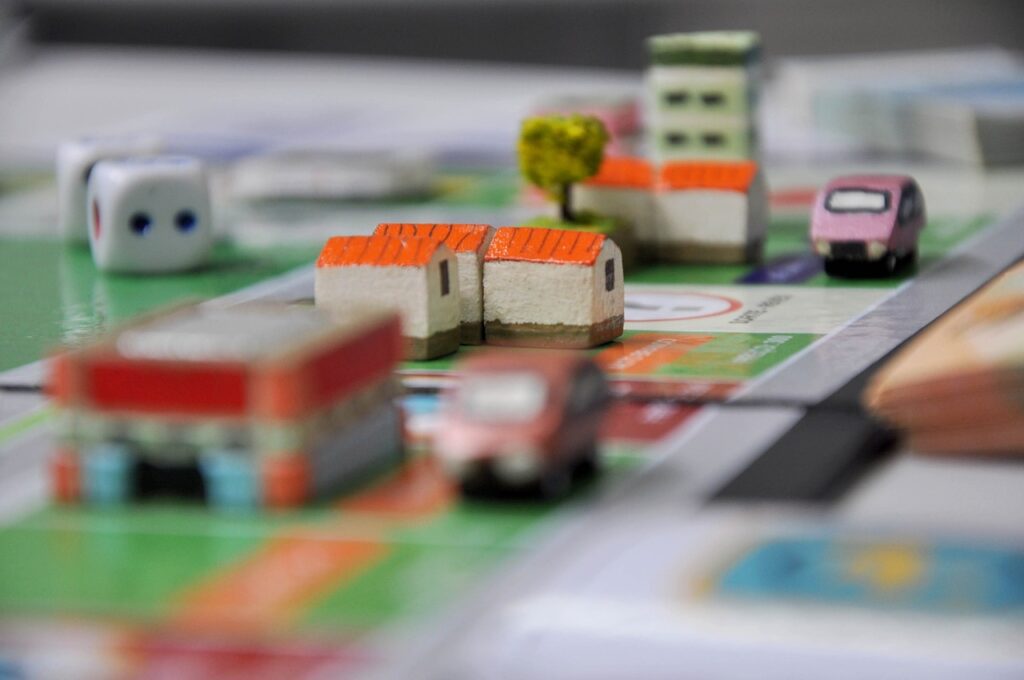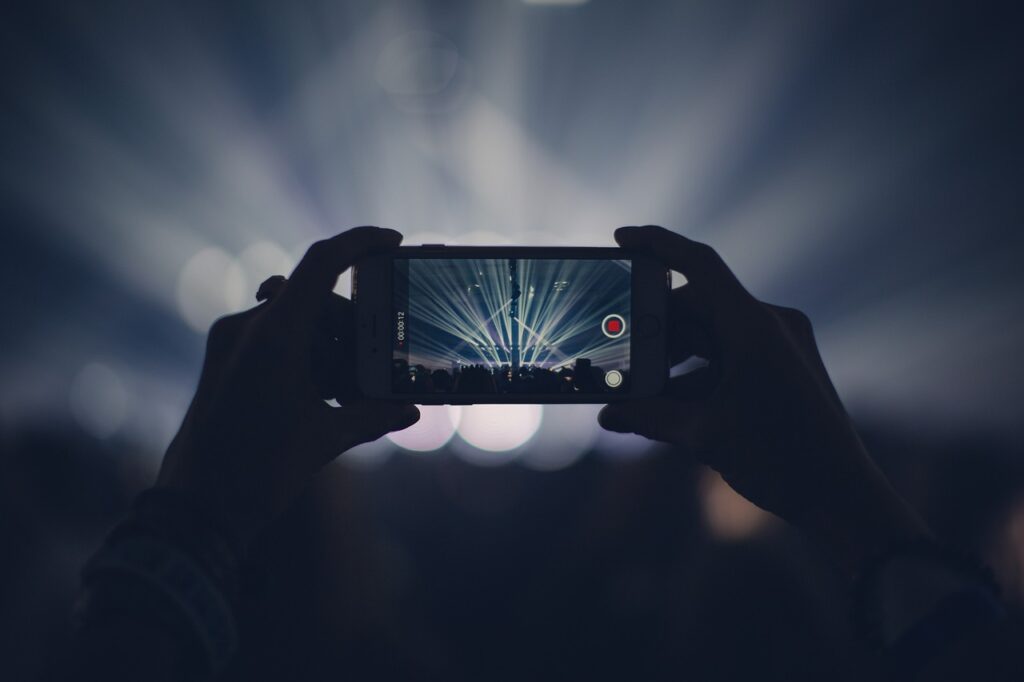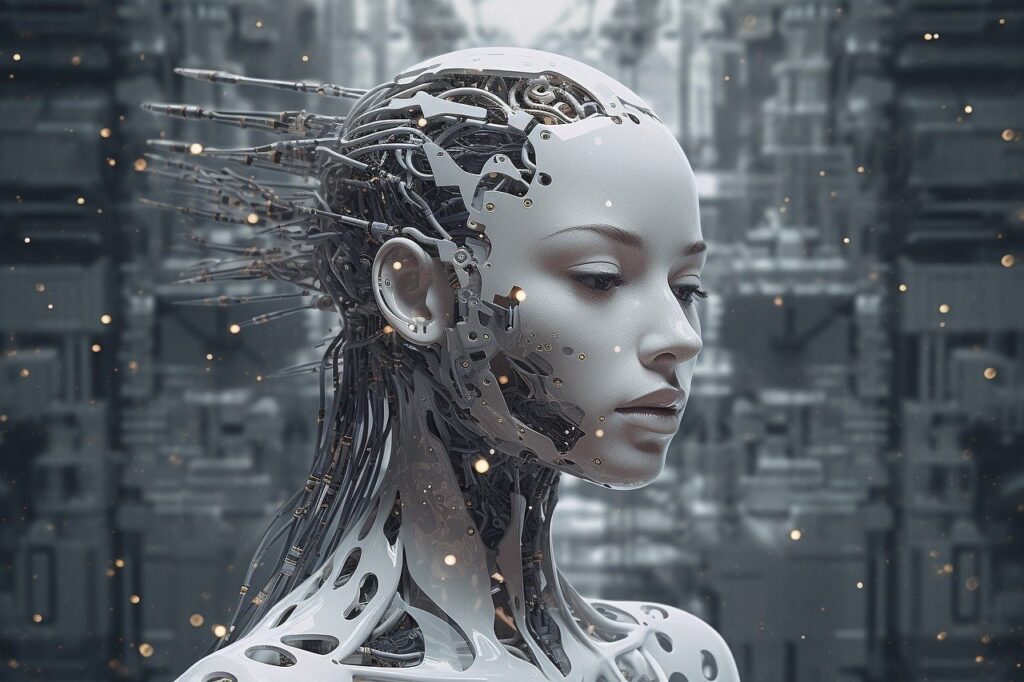Minimalist and complex designs are two opposing yet complementary philosophies in graphic design. One seeks to purify, to reduce to the essential, while the other is enriched with details to create an immersive experience.
The relevance of these design choices intensifies particularly in 2024, when individuality and user experience become key differentiating factors. The question is no longer simply which style is fashionable, but which approach aligns harmoniously with the values of the target audience and the brand's vision.
Benefits of Minimalist Design
Minimalist design, often characterized by the mantra "less is more", emphasizes clarity, functionality and simplicity. This approach seeks to eliminate all superfluous elements and retain only the essentials. Here are a few key benefits of minimalist design:
Clarity and conciseness
Minimalist design excels at conveying a message clearly and directly. By eliminating visual distractions, it allows the main content to stand out, facilitating user understanding and engagement. This approach is particularly effective in a digital environment where the user's attention is constantly solicited.
Easy Navigation
In a web or mobile context, the clarity and conciseness of minimalist design contribute to a fluid user experience. Uncluttered interfaces intuitively guide the user, making navigation through menus and sections both pleasant and efficient.
Improved legibility
The reduction of graphic elements and the focus on text significantly improve legibility. White space, a key feature of minimalism, allows the user's eyes to rest and helps to prioritize information, making reading less tiring and more engaging.
These aspects make minimalist design a wise choice for those seeking to design refined, accessible user experiences, where priority is given to clarity of message and ease of interaction.
Reduced loading time
One of the most significant and often underestimated benefits of minimalist design is the reduction in web page loading time. In an age when connection speed is a fundamental expectation of the online user experience, optimizing loading time is crucial.
Saves bandwidth and resources
By concentrating on the essentials and limiting the use of heavy graphic elements, minimalist design significantly reduces the amount of data to be transferred. This translates into bandwidth savings for the user and reduced demand on server resources for the provider.
Improved referencing
Search engines such as Google are placing increasing importance on site loading speed in their ranking algorithms. A clean, fast-loading design therefore promotes better natural referencing, increasing the online visibility of the brand or product.
These technical aspects, which result directly from the choice of a minimalist design, thus contribute to a better overall user experience, while offering tangible advantages in terms of performance and cost for content creators.
Adaptability
Adaptability is another major advantage of minimalist design. By focusing on simplifying the interface and visual elements, it becomes easier to create responsive designs that provide a consistent user experience across different devices and screen sizes.
Easy to update
Minimalist designs, because of their simplicity, make it much easier to update and maintain websites or applications. The fewer the elements and complexity, the lower the risk of errors when making changes or updates, allowing development and design teams to concentrate on improving the user experience and adding relevant functionality.
Better performance on mobile devices
In an increasingly mobile world, optimizing performance on smartphones and tablets is crucial. Minimalism, with its lightweight designs and focus on the essentials, ensures that applications and websites load quickly and run smoothly on mobile devices, delivering a superior user experience.
In conclusion, the adaptability of minimalist design makes it a preferred solution for meeting the challenges of 2024's ever-changing digital landscape. Not only does it enable an enhanced user experience across a multitude of devices, it also ensures easier and more efficient management of digital content for creators.
Timeless elegance
The timeless elegance of minimalist design lies in its ability to transcend ephemeral trends, offering an aesthetic that remains relevant and appealing over the years. This quality is particularly valuable in a world of fast-changing consumer patterns and constant demands for attention.
Visual Purity
The visual purity achieved through minimalism creates a space of serenity that draws the eye and engages the mind. By getting rid of the superfluous, minimalist design emphasizes the intrinsic beauty of the elements that remain, be they typography, empty spaces, or limited but impactful colors.
Content enhancement
By eliminating distractions, minimalist design enhances the content it presents, allowing key messages to shine through. This is of paramount importance when communicating a brand or product, where clarity of message can be the key to success.
Sustainable and Ecological
Finally, the minimalist approach is often accompanied by an ecological awareness, due to its economy of resources in terms of bandwidth, storage space, and even materials in the case of physical products. This consideration for the environment adds a further dimension to the appeal of minimalism, aligned with the increasingly conscious values of today's consumers.
The minimalist approach, with its timeless elegance, visual purity, ability to add value to content, and sustainable, ecological aspect, offers an appropriate, refined response to the demands of modern design. It underlines the importance of going back to basics, not only to meet the needs of the user, but also to respect our environment.
Opting for a minimalist design can therefore be particularly advantageous for brands aiming to communicate clearly and effectively, while offering an optimized and adaptable user experience.
Benefits of Complex Design
Complex design, with its abundance of details, colors and textures, aims to create a rich, immersive experience for the user. This approach helps to tell deeper stories and generate strong emotional connections. Here are some key benefits of complex design:
Visual and emotional richness
The visual and emotional richness generated by complex design instantly captures the user's attention. By integrating a variety of visual elements such as textures, patterns and colors, this approach creates an immersive experience that stimulates the senses and awakens emotions. This strong visual impact can make a website or application memorable, fostering a deep connection with the user.
Visual Storytelling
A significant advantage of complex design lies in its ability to tell stories through its visual elements. By using detailed images, animations and rich layouts, designers can create captivating narratives that engage users and enrich their understanding of the message or brand. This visual storytelling technique transforms the user experience into an emotional journey, increasing customer engagement and loyalty.
Brand distinction
In a saturated market, a complex and unique design can serve to distinguish a brand from its competitors. Bold design choices can reflect a brand's identity and values, while offering a visual signature that speaks directly to its target audience. This individuality helps brands to position themselves distinctly in the minds of consumers, contributing to their long-term recognition and preference.
Creative flexibility
Complex design offers a limitless blank canvas for creativity. For designers, it's an opportunity to push the conventional boundaries of web or mobile app design, exploring bold compositions, color palettes and typography. This creative freedom can lead to innovative design discoveries, setting new trends that inspire the industry as a whole.
Complex design, with its visual and emotional richness, storytelling ability, brand distinction and creative flexibility, offers a deeply engaging and memorable experience for the user. While it can present challenges in terms of performance and accessibility, when executed with care, it has the potential to transform digital interaction into a meaningful and rewarding experience.
Customization and uniqueness
Personalization and uniqueness are crucial aspects of complex design, enabling us to offer users an experience that is uniquely their own and that sets them apart in an often saturated digital world. Here's how these aspects fit into the complex design framework:
User adaptability
One of the main advantages of complex design is its ability to adapt to user preferences and needs. Thanks to advanced personalization systems, users can modify the look and feel of an interface to better meet their expectations, creating a truly bespoke user experience. This flexibility enhances engagement and strengthens the user's connection with the product or brand.
User Identity Enhancement
The complex design also allows each user's unique identity to be reflected and enhanced. Through advanced personalization options, such as the choice of themes, colors or layout, users can express their personality and preferences, transforming the digital experience into an extension of their personal identity.
These aspects of personalization and uniqueness, inherent to complex design, not only contribute to a richer, more immersive user experience, but also strengthen the emotional bond between the user and the product or brand. By enabling users to see themselves in the interface they are using, complex design creates a powerful sense of belonging and identification, essential in a constantly evolving digital world.
Immersion and Commitment
Immersion and engagement are fundamental pillars of complex design, aimed at capturing the user's interest and keeping them actively involved. These elements are crucial to creating a memorable and meaningful user experience.
Creating an immersed environment
Complex design excels at creating immersive environments where users feel truly immersed in the experience. This is achieved through the use of detailed visuals, sound, animation, and even virtual or augmented reality. This deep immersion encourages users to explore and interact with content in a more instinctive and natural way.
Facilitating Engagement
Furthermore, complex design facilitates engagement by offering rich, meaningful interactions. Instead of simple clicks or swipes, users can participate in activities that require thought and creativity, transforming passive engagement into active participation. This involves interfaces that respond intuitively to user actions, interactive elements that arouse curiosity, and mechanisms that encourage users to continue exploring.
Stimulation of Exploration
One of the key objectives of complex design is to stimulate spontaneous exploration. By presenting intriguing elements and creating non-linear user journeys, users are invited to discover content on their own. This exploration fosters a sense of discovery and wonder, increasing user involvement and strengthening their relationship with the content or brand.
These immersive and engaging strategies not only increase user satisfaction and retention, they also establish a rich and rewarding experience that leaves a lasting impression. In a digital landscape where attention is a precious commodity, complex design offers a path to deeper, more engaging experiences, essential for standing out and building lasting relationships with users.
Flexible storytelling
Narrative plays a pivotal role in building compelling digital experiences, and complex design lends itself beautifully to unprecedented narrative flexibility. This aspect is broken down into several essential sub-sections to consider:
Dynamic Story Adaptation
Complex design enables dynamic adaptation of the story according to the user's interactions and preferences. This ability to modify the story in real time enriches the user experience, offering a personalized journey that reflects the specific actions and choices of each individual. The user becomes co-creator of the experience, actively participating in the evolution of the narrative.
Multiple perspectives
By offering a multiplicity of perspectives, complex design enriches storytelling by enabling users to explore stories from different points of view. This polyphonic approach adds depth and richness to the experience, encouraging the exploration and discovery of varied content that together weave a much more complex and engaging narrative.
Immersion Narrative
The use of tools - such as video, audio, animation and even virtual reality - as part of complex design, amplifies narrative immersion. These multimedia elements serve to immerse the user in a rich narrative universe, where every sense is called upon for a deeply enveloping and memorable experience.
Interactivity and Narrative Choices
Interactivity is at the heart of complex design, offering users the possibility of navigating through narrative choices that influence the story. This non-linear approach introduces multiple paths and alternative endings, engaging users in an active decision-making process that values their role in the narrative.
In short, the flexibility in storytelling characteristic of complex design transforms the way stories are told and experienced in the digital world. It's not limited to the transmission of information, but becomes an interactive exploration, an experience that marks the user in a unique way. This narrative dimension significantly enriches user engagement, solidifying the bond with content and brand through deeply personal and meaningful experiences.
Adopting complex design can therefore offer significant advantages for brands wishing to deliver a rich, personal and immersive experience. However, this approach requires careful execution to ensure that complexity does not detract from the accessibility or clarity of the message.
Considerations for Choosing the Right Design Approach
The choice between minimalist and complex design depends on a number of factors, both related to the nature of your project and the preferences and expectations of your target audience. Here are some key considerations that can help you determine the best approach for your brand or project.
Knowledge of target audience
In-depth knowledge of your target audience is fundamental to making the choice between minimalist and complex design. This means understanding not only their aesthetic preferences, but also their behaviors, expectations and how they interact with digital content. Here are some key sub-sections to consider:
Demographic analysis
A demographic study of your audience can reveal valuable clues about the type of design that will best resonate with them. Age, gender, geographic location and education level are all factors that can influence design preferences.
Understanding User Behavior
User behavior on your site or app can offer insights into their preference between a rich, complex design or a more streamlined approach. Analysis of user paths, click-through rates and time spent on the site can indicate which design promotes better engagement.
Preferences and expectations
Surveys and focus groups can be invaluable tools for directly gathering your audience's preferences and expectations. This qualitative data can help align design choices with users' real desires.
By taking these dimensions into account, you can tailor the design of your project to best resonate with your target audience, creating an optimal user experience that supports your brand or project objectives.
Brand objectives
Brand objectives play a crucial role in the choice of design. Whether your brand aims to establish an online presence, increase user engagement or promote a new product range, the design strategy must be aligned with these objectives. Here are some essential sub-sections to consider:
Strengthening Brand Identity
Carefully selected design helps reinforce brand identity by creating a consistent, recognizable image. Whether you opt for a minimalist or complex design, it's imperative that it reflects your brand's values and vision, contributing to greater memorability among the public.
Improving User Engagement
User engagement is directly influenced by the choice of design. A complex design, rich in interactive elements, can stimulate interaction and immersion, while a minimalist design can highlight essential content, encouraging targeted consumption of information. The aim is to choose an approach that maximizes engagement based on the desired interaction with your audience.
Increased Conversions
Design must not only attract attention, but also guide users towards concrete actions, such as purchasing a product or registering for a service. An in-depth understanding of how design influences user behavior can help you optimize the customer journey to increase conversions.
Market positioning
The choice between minimalist and complex design can also be influenced by the desired market positioning. An innovative, rich design can position the brand as a leader in creativity and technology, while a streamlined design can emphasize simplicity and accessibility.
By carefully aligning design strategy with brand objectives, you can not only create a visually appealing online presence, but also build a user experience that actively supports the achievement of those objectives.
Performance and SEO
Website performance and search engine optimization (SEO) are crucial elements to consider when choosing between a minimalist and a complex design. These factors directly influence the user experience and visibility of your site.
Loading speed
Loading speed is an essential criterion for SEO and user experience. A minimalist design, in general, loads faster due to its simplicity and reduced use of heavy graphic elements. On the other hand, a complex design requires rigorous optimization so as not to have a negative impact on loading speed.
Easy navigation
Ease of navigation contributes to a positive user experience and encourages visitors to explore your site further. A clear, intuitive design helps users quickly find the information or product they're looking for, which benefits SEO and engagement.
Accessibility
Accessibility should be a priority when designing your site. A design that takes into account all users, including those with special needs, increases the reach of your content and supports the principles of inclusion. Search engines favor accessible sites, which can improve your rankings.
Mobile Compatibility
With the steady increase in mobile browsing, a responsive design that adapts to different devices is essential. A well-optimized mobile site promotes a better user experience, reduces bounce rates and improves your SEO ranking.
Image and Multimedia Content Optimization
Images and multimedia content enrich the user experience, but can significantly affect performance if not optimized. It's crucial to strike a balance between quality and performance, using compressed formats and integrating lazy loading techniques.
By integrating these considerations into your design strategy, you can not only create an attractive site, but also one that performs well and ranks well in search results. It's a delicate balance of aesthetics, functionality and optimization that requires careful planning and execution.
Flexibility and scalability
Flexibility and scalability are essential aspects to consider when designing a website, allowing the design to adapt and evolve with the changing needs of the brand or project.
Adaptability to new trends
The design must have a flexible structure so that it can easily incorporate new trends without requiring a complete redesign. This allows you to keep your site up to date with the latest developments in design and user experience, boosting visitor engagement and interest.
Scalability for Growth
Planning your design's scalability from the outset ensures that your site can handle an increase in traffic or content without compromising performance or user experience. A well thought-out architecture makes it easy to expand functionality or add new sections, without altering the integrity of the overall design.
Easy maintenance and updates
A well-structured design simplifies the maintenance process and regular updates, essential for ensuring site security and relevance. The ability to update content, visual elements or functionality without major disruption supports operational efficiency and minimizes the risk of downtime.
By incorporating flexibility and scalability into your website design, you ensure not only a quality user experience over the long term, but also a platform that successfully evolves in line with your brand or project's growth ambitions. This establishes a solid foundation on which your online presence can flourish, adapting nimbly to future challenges and opportunities.
Budget and Resources
Budget and available resources are determining factors in the selection of your website design. A richer, more complex design may require a higher initial investment in terms of development, design and testing. However, it can be justified by a high-end positioning or an unprecedented user experience.
Development costs
Development costs vary significantly according to design complexity and integrated functionality. An accurate upstream estimate helps to manage the budget effectively, and to align expectations with financial capabilities.
Human Resources
The talent and expertise required to bring a complex or minimalist design to life is also a consideration. A more specialized and experienced team may be required for innovative designs, which may impact the budget allocated to the project.
Maintenance costs
The design chosen will influence future maintenance costs. A simple design could reduce these costs, while a more complex design, incorporating advanced technologies, could increase them due to the need for regular updates and more sustained technical monitoring.
A precise assessment of the costs and resources required is essential to the success of a web project. A balance must be struck between aesthetic aspirations, functionality, and budgetary constraints to create a website that is not only attractive and efficient, but also viable and sustainable over time.
In conclusion, there is no universal answer when choosing between minimalist and complex design. The choice depends on the match between the aspirations of the brand, the needs of the target audience, and the execution capabilities of the project. A balanced approach can sometimes offer the best of both worlds, integrating elements of both philosophies to create a unique and engaging user experience.
Case Studies
The case studies that follow illustrate how different web projects have navigated the design spectrum from minimalist to complex, while aligning their choices with strategic objectives, budget constraints, and resource requirements. These concrete examples highlight the practical considerations, challenges and innovative solutions used to create high-performance, aesthetically pleasing websites. They serve as a source of inspiration and guidance for decision-makers involved in web project development, underlining the importance of rigorous planning and expert execution in achieving online success.
Minimalism: Apple
Apple is often cited as the epitome of minimalism in design, both in its products and in its brand communication. Here's how Apple makes the most of minimalism:
Sleek Design and Functionality
Apple focuses on clean, simple design, making its products instantly recognizable. Every design element serves a function, ensuring a smooth, intuitive user experience.
Strong Brand Identity
Minimalism has helped Apple build a strong, consistent brand identity. By focusing on neutral colors, clean lines and simple typography, the brand effectively communicates its values of sophistication and innovation.
Product focus
Apple's minimalist strategy emphasizes the products themselves, rather than drowning them in superfluous design elements. This helps consumers quickly understand what the company offers and the added value of its products.
In short, Apple embodies the success of minimalism in design, demonstrating how this approach can reinforce brand identity, simplify the user experience and highlight product quality and innovation.
Complex Design: Gucci
Gucci represents an emblematic example of using complex design to create a rich and memorable brand experience. Here's how Gucci employs this design philosophy:
Rich visual storytelling
Gucci uses a vivid color palette, elaborate patterns and bold imagery to tell its brand story. This approach immerses consumers in a unique and distinctive universe, reinforcing their commitment to the brand.
Immersive User Experience
Gucci's website and applications offer an immersive user experience, where every interaction is designed to surprise and captivate. Whether through complex animations, high-quality videos, or interactive elements, Gucci succeeds in maintaining user interest while reflecting the brand's values of luxury and exclusivity.
Adaptation and customization
Gucci leverages the complexity of its design to offer a highly personalized experience to its customers. Thanks to interactive design elements, the brand can offer tailor-made products and personalized recommendations, strengthening customer relationships and brand loyalty.
In conclusion, Gucci's complex design perfectly illustrates how a brand can use bold, rich aesthetics to create a captivating brand experience. This strategy not only helps to stand out in a highly competitive market, but also creates a deep connection with the target audience, offering them a unique and memorable experience.
Balance between the two: Airbnb
Airbnb represents a model of perfect balance between minimalism and complex design, managing to capture the essence of both worlds to enhance the user experience in terms of both efficiency and emotional engagement. Here's how Airbnb achieves this:
Intuitive user interface
Airbnb's user interface combines the simplicity of minimalism with the warmth and welcome necessary for a home-sharing platform. Using a soft color palette, clear typography and open spaces, the website is easy to navigate while inviting users to explore.
Personalized Experience
Thanks to intelligent use of user data, Airbnb offers a highly personalized experience. Accommodation recommendations, travel experiences and even content presentation adapt to individual preferences, demonstrating how complexity can be put to work for the user.
Storytelling through Design
Airbnb leverages the power of visual storytelling to create emotional connections. From carefully selected photographs to detailed descriptions of accommodations, every element is designed to tell the story of the place and its guests, embodying a blend of simplicity and complexity in the service of brand storytelling.
Social and Community Impact
Airbnb's mission to create a sense of belonging worldwide is also embodied in its design. By highlighting local community experiences and stories, the platform uses the complexity of design to encourage user interaction and engagement, reinforcing the sense of global community.
In conclusion, Airbnb illustrates how a balance between minimalism and complex design can be strategically used to enhance both functionality and the emotional experience of users. This approach makes it possible to meet the varied needs of the public while remaining true to the brand's vision and values.
These case studies demonstrate that the choice between minimalism and complex design is not always binary. Companies can take a hybrid approach, selecting the elements that best suit their brand and message, to create user experiences that resonate with their target audience.
As we move into 2024, design will continue to play a pivotal role in business success. Whether opting for a minimalist or complex style, the important thing remains to remain aligned with business objectives while inspiring continuous innovation and optimization of design strategies.
Ultimately, whether you opt for a clean design that highlights substance, or an ornate style that captures the imagination, the choice remains yours. The key is to move in a direction where design becomes the echo of your narrative, amplifying interaction with your target audience.











